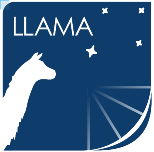
Water vapor in the atmosphere is the main obstacle to astronomical observations in millimeter and submillimeter wavelengths as it compromises the transparency of the atmosphere. Thus, it is necessary to install radio telescopes in high altitude sites. In the Argentine territory, the Puna region, with altitudes above 4000m, is a natural candidate to house astronomical research infrastructures in these frequency ranges.
For approximately seven years, the Instituto Argentino de Radioastronomía (IAR) carried out monitoring campaigns for atmospheric transparency in two locations in the Argentine northwest, specifically in the Province of Salta. These sites were Tolar Grande, in the mountain range of Macon, and Alto Chorrillos. At the same time, sites near the towns of Mina Aguilar and Susques (Province of Jujuy) were analyzed and rejected. The instrument used for the measurements of transparency was a radiometer operating at the frequency of 210 GHz, called "tipper". The equipment was supplied by the Autonomous University of Mexico (UNAM). Until 2015, data obtained daily were transmitted through a microwave link to Santo António de los Cobres (SAC) and from there to the IAR, via internet.
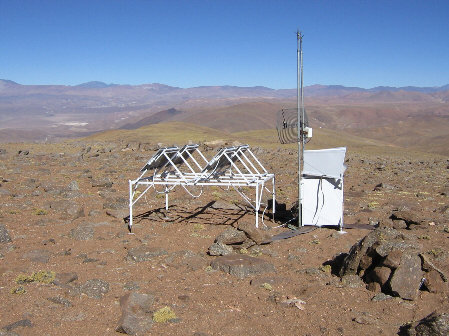
The equipment (tipper) used by IAR in the process of site selection for LLAMA.
The finally chosen site to install LLAMA is that of the region of Alto Chorrillos (66o 28 '29.4 "W, -24o 11' 31.4" S), located about 4820m above sea level, 16km of Santo António de los Cobres (SAC) and 180km in straight line from the ALMA's site, Chajnantor (Chile). Subsequently, a weather station was installed for more complete characterization of the site. An important factor for the final decision were the strong winds measured in the Tolar Grande region (4600m of altitude), which could distort the antenna surface and increase pointing errors.
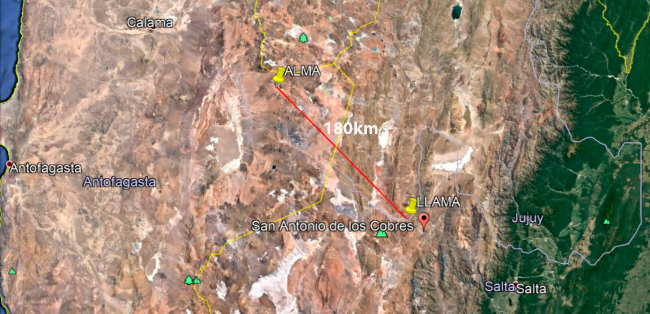
Image obtained from Google Earth, showing the location of the site chosen for the LLAMA and the distance to Chajnantor, where ALMA is installed.
In turn, Alto Chorrillos presents seasonal variations, especially in the summer. At that time the climate is more humid, which degrades the atmospheric opacity in the frequencies of interest for LLAMA. Such degradation stems from the influence of the phenomenon known as "Bolivarian winter", which implies in the increase of the frequency of rains in that season. This phenomenon affects a wide region, which includes Chajnantor, in the north of Chile, site of ALMA. Nevertheless, Alto Chorrilos can be used during this time of year for competitive observations in millimetric frequencies.

Comparison between relative air humidity in Alto Chorrillos and Chajnantor (Bareilles et al. 2011).
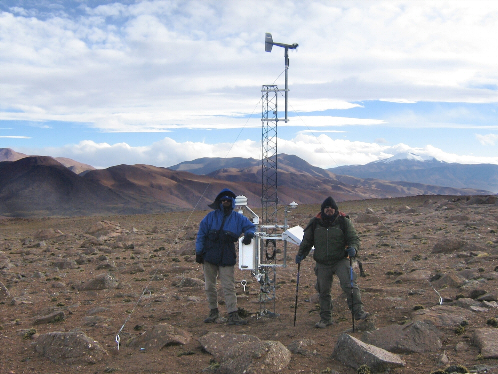
Weather station and the IAR team at the LLAMA site.
The high altitudes required for observatories such as LLAMA have the disadvantage of the lack of oxygen, which will require environments specially equipped for operation. For this same reason, the team authorized to carry out on-site tasks should do so under strict security rules. Dorms, laboratories and offices are being installed in Santo Antonio de los Cobres and the operation of the telescope should be preferentially remote.
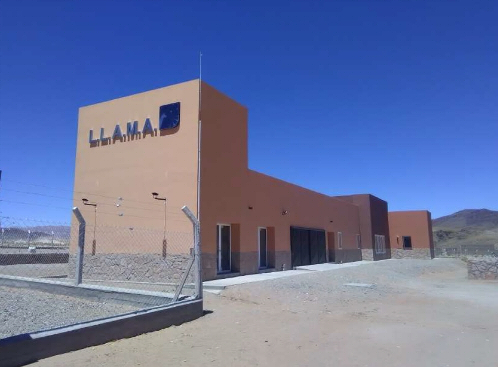
Headquarters in Santo Antonio de los Cobres that will house laboratories, dormitories and the remote operation of LLAMA.
Explore the region!